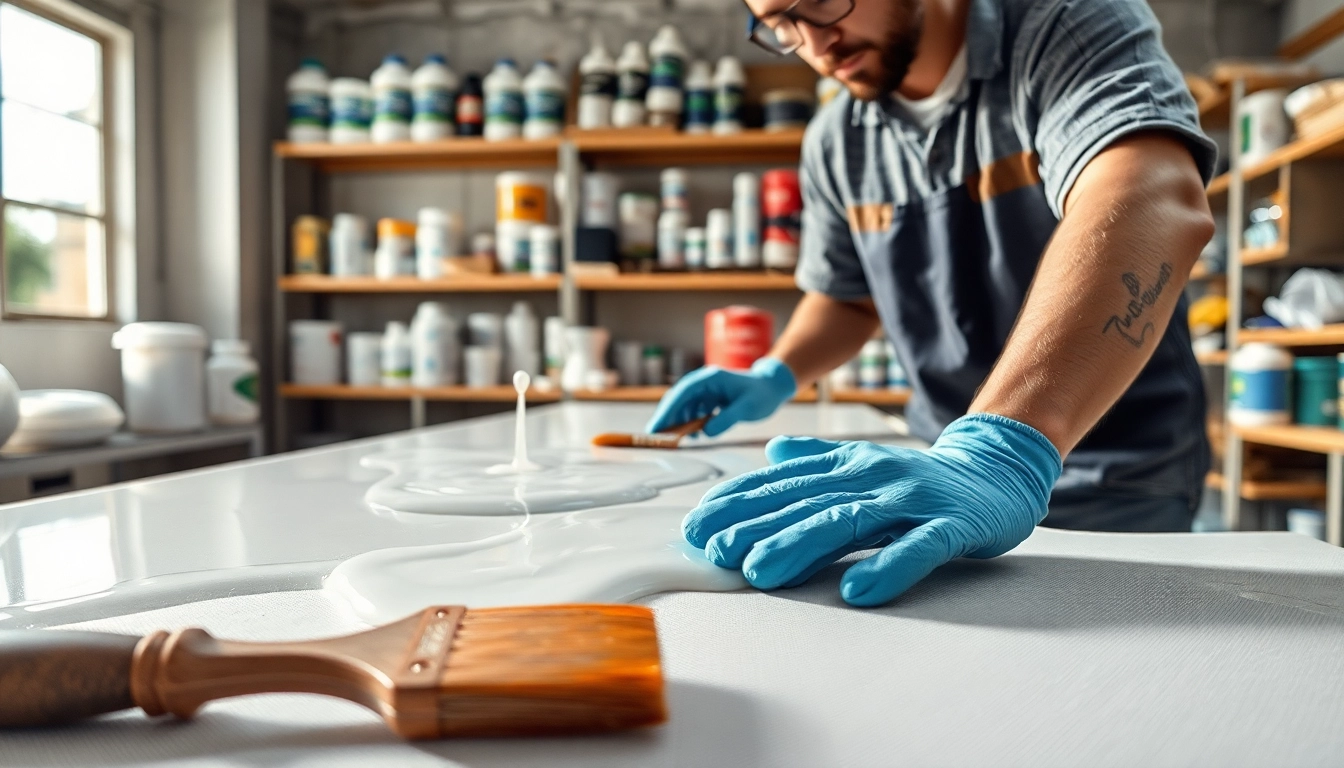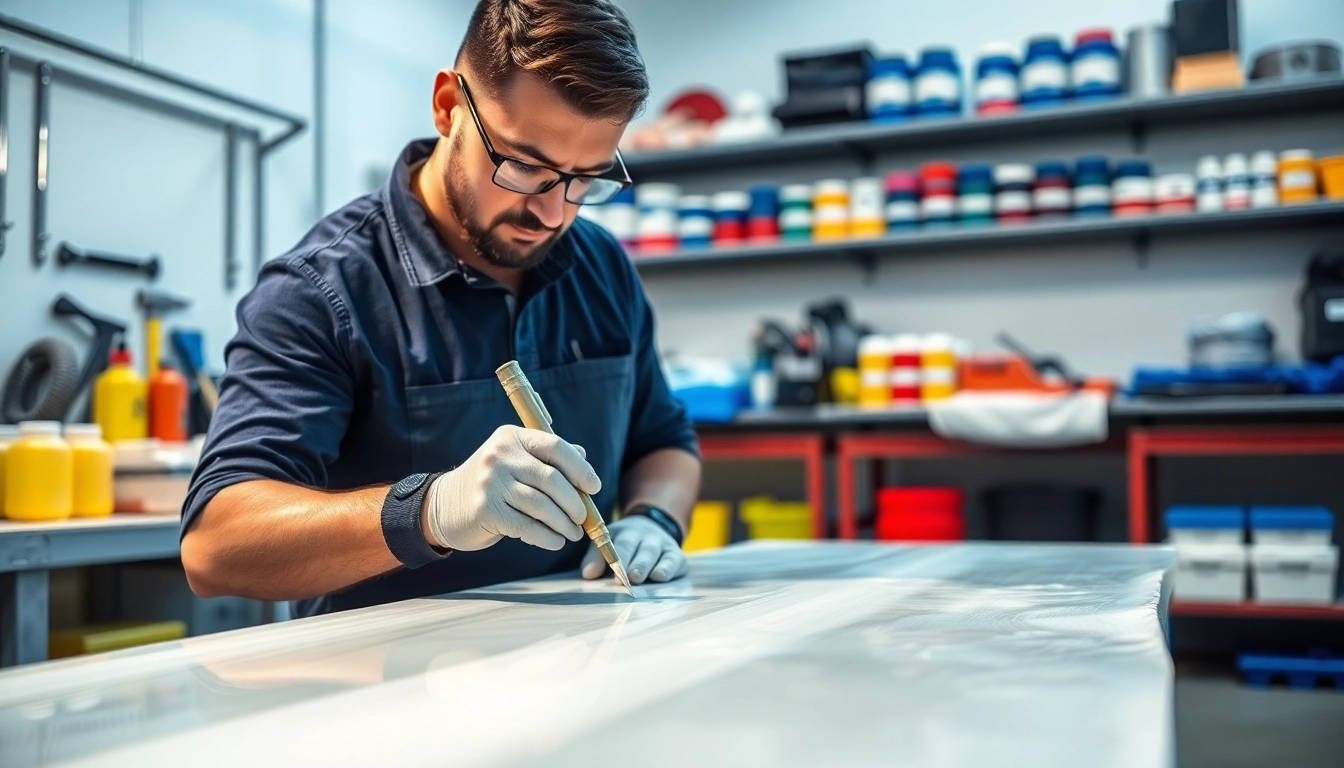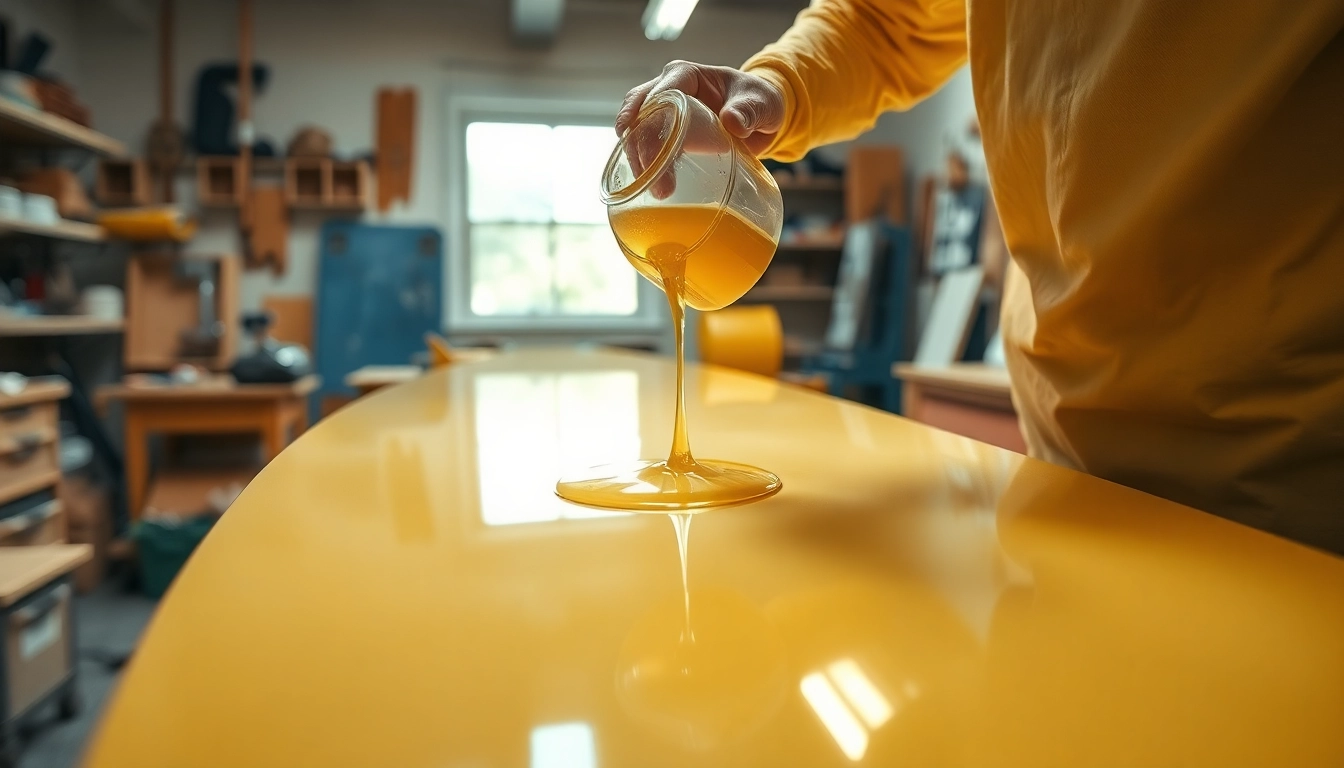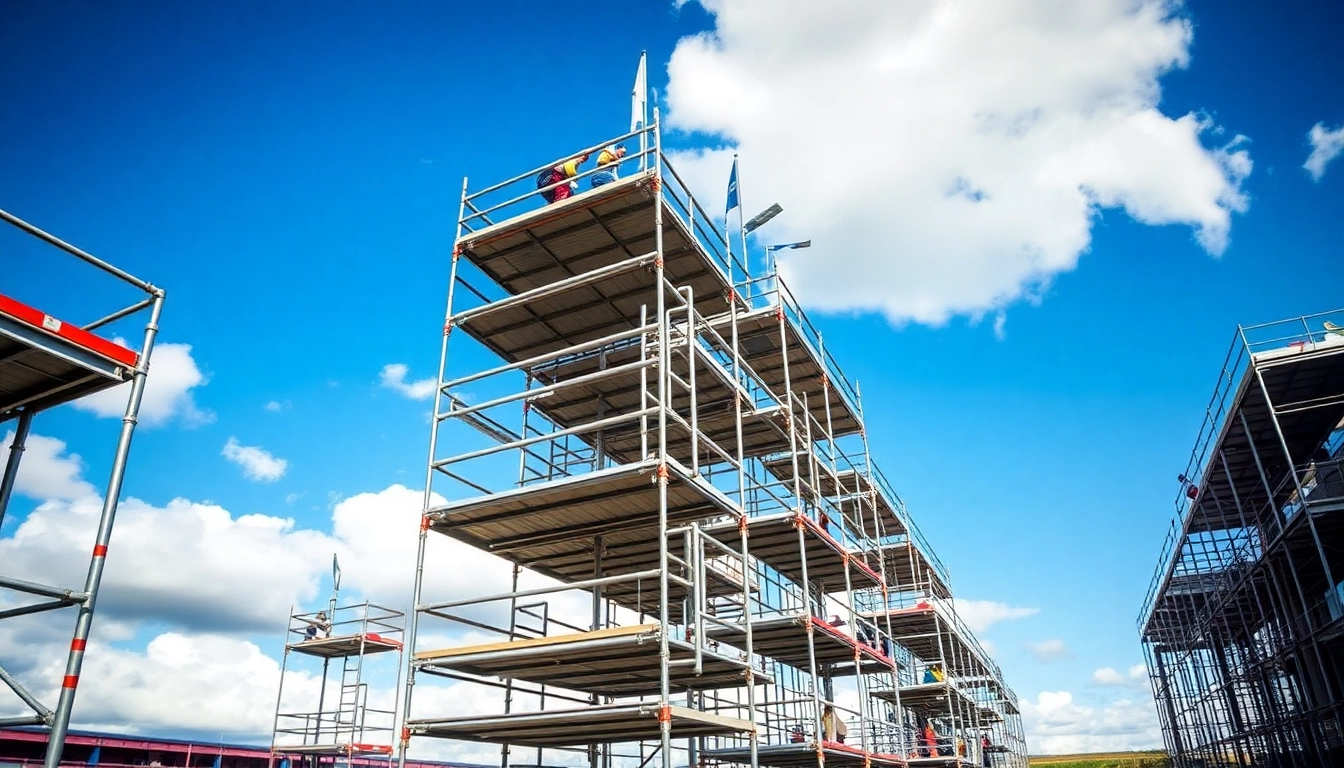Choosing the Right Laminating Resin for Your Projects: A Comprehensive Guide
Understanding Laminating Resin: Definition and Uses
What is Laminating Resin?
Laminating resin is a type of synthetic resin used primarily for bonding layers of materials together, particularly fiberglass. This resin serves as an adhesive and provides structural integrity, making it essential for various applications in manufacturing and repair. Laminating resins are typically formulated to cure quickly and provide robust bonding capabilities, which makes them ideal for use in settings where strength and durability are paramount.
When it comes to laminating resin, users can expect a wide range of performance characteristics that allow them to adhere materials like fiberglass and carbon fiber efficiently. This resin is not just for bonding; it also contributes to the overall performance and aesthetics of end products, making it a cornerstone material in industries such as boating, automotive, and construction.
Main Applications of Laminating Resin
Laminating resin is employed in several key applications:
- Marine Industry: Ideal for constructing boats and other watercraft, laminating resin’s ability to resist water and corrosion makes it highly sought after.
- Automotive Manufacturing: Used to bond and reinforce the body panels of cars, improving their strength while keeping the weight low.
- Construction: In buildings, laminating resin is used to bond composite materials, providing both thermal insulation and structural stability.
- Sporting Goods: Often found in the manufacturing of high-performance equipment, such as bicycles and surfboards, where strength and light-weighting are crucial.
Laminating Resin vs Other Types of Resin
Understanding the difference between laminating resin and other types of resin is crucial for selecting the right material for any project. Laminating resin is specifically designed for creating strong bonds and reinforced layers, commonly seen in applications with fiberglass. In contrast, other resins, such as adhesive or casting resins, may not provide the same level of strength or performance for layering applications.
For example, epoxy resin, another popular choice, offers superior adhesion properties and is often used in structural applications. However, it may take longer to cure and can be more expensive than laminating resin. By assessing the specific needs of a project including environmental conditions, curing time, and desired aesthetics, users can better choose between laminating resin and other options available in the market.
Types of Laminating Resin: Choosing the Right One
Polyester Laminating Resin: Features and Benefits
Polyester laminating resin is one of the most common types used in crafting composites, particularly in marine applications. It offers several features and benefits that make it popular:
- Cost-Effective: Polyester laminating resin is typically less expensive than epoxy formulations, making it a go-to choice for large-scale projects.
- Versatile: It can be used with a variety of reinforcing materials such as fiberglass, carbon fiber, and Kevlar, making it applicable in numerous settings.
- Quick Curing: Typically cures faster than other types of resin, which can help speed up project timelines.
- Good UV Resistance: Offers resistance to ultraviolet (UV) light, reducing the risk of degradation over time in outdoor applications.
Epoxy Laminating Resin: Advantages and Disadvantages
On the other hand, epoxy laminating resin has its unique set of advantages and disadvantages:
- High Adhesion Strength: Epoxy offers superior bonding capabilities compared to polyester, often providing stronger final products.
- Flexibility: Epoxy maintains flexibility even in cold conditions, which reduces the risk of chips or fractures.
- Extended Work Time: It allows for longer working times before curing begins, providing flexibility during application.
However, there are downsides to consider. Epoxy resins can be more costly and tend to require special handling due to their sensitivity to moisture during the curing process. Hence, for extensive projects or those constrained by budget, polyester laminating resin may be a more practical choice.
Comparative Analysis of Laminating Resin Varieties
When it comes to laminating resins, understanding their distinct varieties is crucial for making informed decisions. The two primary types, polyester and epoxy, have different chemical compositions that impact performance:
| Type | Strength | Curing Speed | Cost | Applications |
|---|---|---|---|---|
| Polyester Laminating Resin | Moderate | Fast | Low | Marine, Automotive, General Composites |
| Epoxy Laminating Resin | High | Slow | High | High-Performance Applications |
This analysis aids users in choosing based on project specific needs, budget constraints, and desired end-use performance levels.
Best Practices for Using Laminating Resin
Preparing for Laminating Resin Application
Preparation is key in ensuring successful results when applying laminating resin. Users should start by assessing the surface to which the resin will be applied:
- Surface Cleaning: Ensure surfaces are free from contaminants like dust, oil, or moisture.
- Material Compatibility: Confirm that all materials to be bonded are compatible with the chosen resin type.
- Temperature Control: Maintain a suitable environment as environmental factors like temperature and humidity can affect curing times and adhesion.
Step-by-Step Guide to Applying Laminating Resin
Follow these steps for successful laminating resin application:
- Mixing: Properly mix resin and hardener according to the manufacturer’s specifications, ensuring uniform distribution.
- Application: Use brushes, rollers, or spray equipment to apply resin evenly over the surface.
- Layering: If using multiple layers, apply the next layer when the previous one is still tacky to ensure a strong bond.
- Curing: Let the resin cure as per the instructions or until hardened; avoid disturbing during this period.
Common Mistakes to Avoid with Laminating Resin
Even experienced users encounter challenges with laminating resin. Here are common pitfalls to avoid:
- Incorrect Mixing Ratios: Always adhere to specified mixing ratios; incorrect proportions can lead to incomplete curing.
- Poor Surface Preparation: Insufficient cleaning can hinder adhesion and lead to structural failures.
- Neglecting Environmental Factors: Failure to monitor temperature and humidity can affect curing process and final resin characteristics.
Tips for Maintaining and Storing Laminating Resin
Optimal Conditions for Laminating Resin Storage
To maximize the lifespan and effectiveness of laminating resin, it is essential to store it properly:
- Temperature: Store in a cool, dry place away from direct sunlight and heat sources.
- Container Integrity: Ensure containers are sealed tightly to prevent contamination from air and moisture.
- Fire Safety: Keep away from open flames, as many resins are flammable.
How to Extend the Shelf Life of Laminating Resin
To extend the shelf life, consider the following practices:
- Avoid Contamination: Always use clean tools when dipping into resin containers to prevent contamination.
- Check Expiry Dates: Regularly monitor the dates and discard any expired resins to avoid poor performance.
- Rotate Stock: Use the older stock first to ensure freshness and usability of materials.
Signs that Laminating Resin Has Expired
Recognizing when laminating resin has expired is crucial to maintaining high-quality results:
- Tacky Residue: If mixed resin remains tacky after appropriate cure time, it has likely expired.
- Visual Changes: Look for discoloration or separation within the resin container.
- Poor Application: If the resin does not adhere properly, it can indicate that it has lost its effectiveness.
Future Trends in Laminating Resin Technology
Innovations in Laminating Resin Formulations
The field of laminating resin is continuously evolving, with innovations focusing on enhancing performance and sustainability:
- Bio-Based Resins: New formulations are being developed from renewable resources, reducing reliance on petroleum-based materials.
- Improved Curing Agents: Advances in curing agent technology are leading to faster curing times and stronger bonds.
- Advanced Coatings: Innovations in surface coatings enhance UV resistance and longevity of the resin’s finish.
Environmental Considerations for Laminating Resin Production
Manufacturers are increasingly focusing on the environmental impact of laminating resin production. Efforts are being made to improve energy efficiency, reduce volatile organic compounds (VOCs), and utilize materials that decompose more effectively. These considerations not only align with global sustainability efforts but also offer manufacturers opportunities to develop more marketable products that appeal to environmentally conscious consumers.
The Impact of Technology on Laminating Resin Applications
Technology plays a pivotal role in the application of laminating resin. The introduction of robotics and automated systems has streamlined the application processes, improving accuracy and consistency. Additionally, advanced testing methods enable manufacturers to assess resin performance under various conditions, ensuring that products meet the rigorous standards expected in the industry.














Post Comment